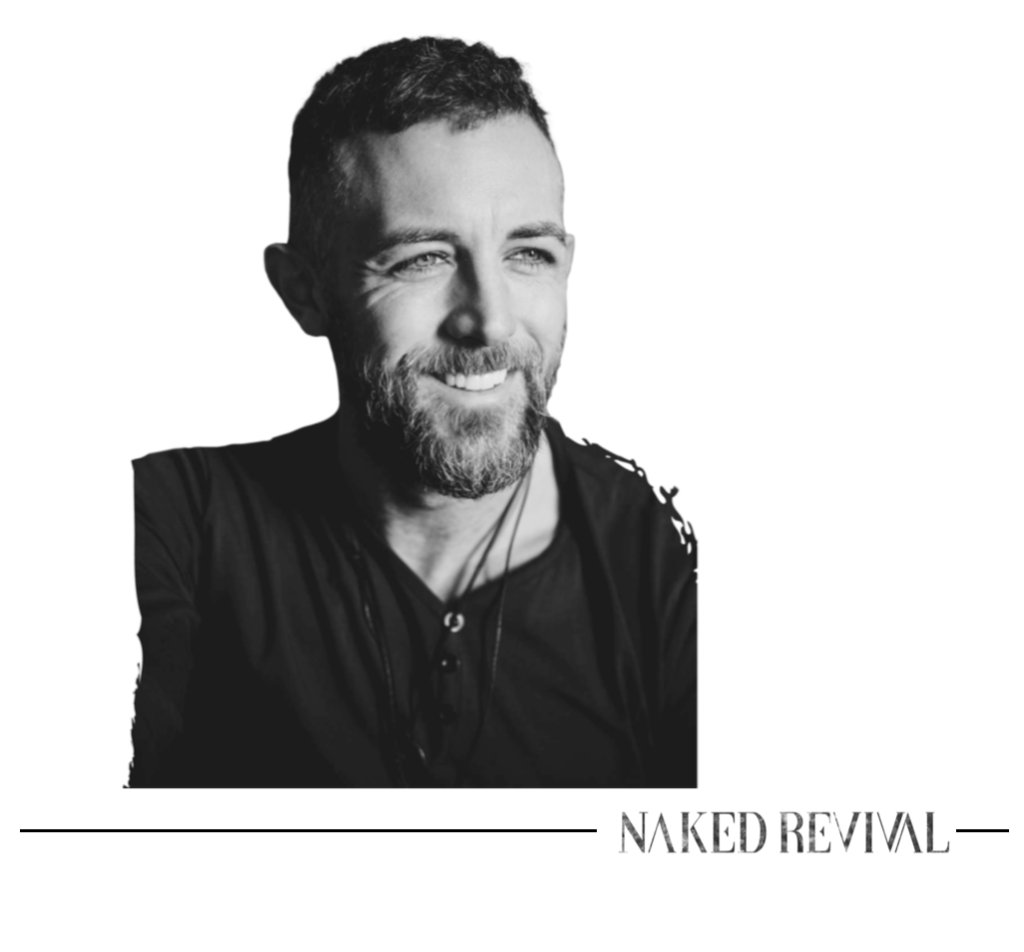By: Joel Primus
CEO Founder
NAKED REVIVAL INC
Lao Tzu’s “A journey of a thousand miles begins with a single step.” Or, Stephen Covey’s “Begin with the end in the mind.”
Once the buzz of these pithy didactic saying and stories wears off, do you actually believe them?
We’ll come back to these quotes in a few pages.
Baseball is arguably America’s most iconic sport; in the game, a moonshot is a home run hit that reaches a great height and distance.
In the world of entrepreneurship, and most notably tech, a “moonshot” is an extremely ambitious and innovative project. Much like how we can visualize a heroic home run sending the crowds into a frenzy, we can hear the Nasdaq bell ringing or see Time magazine’s cover about an entrepreneur reaching the zenith of their pioneering pursuit.
This chapter is about entrepreneurial moonshots, with two crucial/ parallels to baseball.
What comes before that apex of glory?
How many strikeouts, hours of practice, lost games, injuries and meltdowns must one endure and learn from before that one big moonshot is achieved?
How close does an entrepreneur come to burning up in the sun, so to speak, on the way to the moon?
And what is the foundation that guides them on that journey?
It starts, indubitably, with an idea.
As one of rock’s most ambitious, innovative musicians, Peter Gabriel, once said, “All of the buildings, all of the cars, were once just a dream in somebody’s head.”
Making or doing what others believe impossible begins as a wisp of thought conjured up in the deep cauldron of one’s mind. Maybe as a dream that awakens one in the middle of the night, maybe as a thought that strikes like lightning, or maybe as inspiration captured through our senses as we observe the world around us.
Elizabeth Gilbert puts it perfectly:
“I believe that our planet is inhabited not only by animals and plants and bacteria and viruses, but also by ideas. Ideas are a disembodied, energetic life-form. They are completely separate from us, but capable of interacting with us — albeit strangely. Ideas have no material body, but they do have consciousness, and they most certainly have will. Ideas are driven by a single impulse: to be made manifest. And the only way an idea can be made manifest in our world is through collaboration with a human partner. It is only through a human’s efforts that an idea can be escorted out of the ether and into the realm of the actual.
Ideas spend eternity swirling around us, searching for available and willing human partners. (I’m talking about all ideas: artistic, scientific, industrial, commercial, ethical, religious, political.) When an idea thinks it has found somebody — say, you — who might be able to bring it to fruition, the idea will try to get your attention.
Sometimes — rarely, but magnificently — there comes a day when your defences slacken, your anxieties ease, and you’re relaxed enough to receive the magic. The idea, sensing your openness, will start to do its work on you. It will send the universal physical and emotional signals of inspiration (the chills up the arms, the hair standing up on the back of the neck, the nervous stomach, the buzzy thoughts, that feeling of falling in love). The idea will organise “coincidences” to tumble across your path, to hold your interest. You will start to notice all sorts of signs pointing you towards the idea. The idea will wake you up in the middle of the night and distract you from your everyday routine. The idea will not leave you alone until it has your full attention.
And then, in a quiet moment, it will ask, “Do you want to work with me?”
An entrepreneur, a pioneer in any medium, has two choices. “No, I don’t want to,” is an option, but “yes, I’m going after this moonshot,” is often where we unlock our deepest lessons and potential as a human being. For when we say “yes” our spirit makes a choice to “sign a contract” of which only we know the terms and can hold ourselves accountable to.
The rest of world will not care about our contract; if they even know about it, they may criticize and doubt us until we’ve made the impossible possible.
Which means, of course, that it was never impossible to begin with, and the only limitations were of the mind and zeitgeist.
Which brings us back to the proverbs shared at the beginning of this chapter. With no real road map to guide us, we have to meet ourselves where we are right now — knowing what we know (and don’t know) about our pursuit, believing in it and ourselves, knowing where we want to end up, and taking the first step.
In Start-up Land, nothing is ever a straight line. It’s critical that you have some basic principles in place before you start your moonshot — because things don’t always go as planned. If your guiding principles are solid and clear, they can act like a compass to help you navigate the inevitable surprises and sudden changes.
If you envision a house, these principles are the foundation on which the house is built. If the foundation isn’t properly established and solid, the house won’t survive shifts in the ground or bad weather. Over time, your house will deteriorate. In a moonshot this foundation include:
- Establish your visions – “Why” and the Why behind your Why
- Establish your guiding principles and core values
- Establish your objectives
- Establish what is essential—personally and professionally
- Mindset
The first thing to get crystal clear on is: Why are you starting this moonshot in the first place? This underlying “why” is rooted in your emotional make up. It is part of understanding who you are and why you do the things you do. For instance, your motivations can be rooted in insecurity, feelings of not being enough, and/or the need to prove someone wrong. Insecurity can be a powerful motivator, but if not managed and understood, it can lead to self-destructive behaviour.
As Tim Glover, author of Relentless, says:
“Being the best means engineering your life so you never stop until you get what you want, and then you keep going until you get what’s next. And then you go for even more. Relentless is about never being satisfied, (it has) a dark side… They get what they want, but they pay for it in solitude. Excellence is lonely.”
Knowing the why behind your why will help you be objective in your decision-making so as not to be victim to your own blindspots, so you are doing things that support the main “Why” of your moonshot and not your ego.
What’s the reason for your company to exist? What is its singular purpose?
Your “Why” is true north on your moonshot compass. It keeps you focused on what is essential so as not to get distracted along the way.
Establish your Guiding Principles and Core Values
When you’re launching a moonshot, just like building a house, understand that it’s going to take longer and cost more (maybe a lot more) than you originally thought. To paraphrase Prussian Field Marshall Helmuth von Moltke: “No plan survives first contact with the enemy.”
Of course, I don’t view launching your business as akin to facing an “enemy,” but the point is still powerful. You’ll face many different and unexpected scenarios as you build your moonshot. In order to navigate the challenges and make the best possible adjustments for each scenario, your Guiding Principles and Core Values should be established early and understood by your entire team.
Values are qualities or standards that act as the foundation for our principles and guide our behaviours.
Principles are the rules that lead to our actions.
Establish about a few key Core Values and Guiding Principles to help guide your decision making early. Add new ones over time.
Here are two Core Values and two Guiding Principles:
Core Values:
– Continuous improvement
The desire for continuous improvement in everything we do. We’re all on individual journeys personally and professionally.
It’s important to find peace and acceptance wherever we are in any given moment, and with whom. Simultaneously, we must focus on con- tinuous improvement — to be the best that we can as individuals and as a company. This includes our personal lives, our relationships, our goals, products, customer experiences — everything.
-Action
Seek knowledge and feedback. Reflect. Apply the lessons you’ve learned. Do better next time.
– Gratitude
We practice gratitude daily.
We must have a commitment to gratitude and allow it to guide our thoughts and actions. Let us be grateful for those who host us in their beautiful cities when we travel; those who cut the grass, take out the trash and make the coffee; those who raised the people who are responsible for our freedoms today. Let’s be radical about our gratefulness every single day.
Guiding Principles
– Action: Say, “Thank you” regularly. Check yourself when you’re feeling negative about a situation and count your many blessings.
– Always Follow the Process.
Following the process keeps team members accountable and reduces errors. When there’s a process to follow, and people follow it, it helps you address issues as they arise; you can correct your course and get the desired result.
Focus on the Most Important Task First.
Even if it’s something you don’t want to do, you should always do the most important task first.
Establish your Objectives
Everyone needs Objectives (even the founders and CEO) and everyone needs to know what they are. Objectives are usually simple, easy to define and measurable.
An objective doesn’t have to include how it’s going to be accomplished. Moonshots are usually new territory and the how may not be clear at the start. The person assigned an objective still has a lot of freedom to figure out the best way to achieve it, as well as the flexibility to try creative solutions if their first plan doesn’t work.
Making objectives public (at least within the team) allows everyone to know what everyone else is responsible for, and creates a sense of accountability. With public objectives, everyone can rest assured that everyone else is working as hard as they are; it’s the ultimate accountability.
Objectives that are anchored by realistic and agreed-upon timelines keep your team focused on required tasks. Team members will feel much better about the company and their day-to-day work when goals and objectives are clear. Establishing fewer objectives will increase the possibility of success.
At my first company, Naked, we established objectives very early on. We borrowed from Entrepreneurial Operating System® to define our key objectives as “Rocks” according to four distinct parts:
- The What — What is our goal? It should be easily understood by all.
- The How — What do we need to do in order to accomplish the objective and what do we need to do to get there?
- The Results — Are there measurable steps we can take along the way that lead to successfully reaching the objective? Establish relevant KPIs (Key Performance Indicators) to measure results that will lead to success in the objective.
- The Reflection — Afterward, we reflected on what went right and wrong with our steps, KPIs and process. We’d discuss this openly as team members and assess what we might need to change for the next set of objectives.
Setting objectives is a foundational pillar of building a business but it’s important to approach objectives with an open and, dare I say, flexi- ble mind. The Marshall Goldsmith expression — “What got you here won’t get you there” — comes to mind. Factors change and you need to be able to pivot and adjust your objectives as needed to propel the business forward.
Establish What is Essential
Essentialism, to focus on what matters most so you can give your best to it, is paramount when it comes to striving for your moonshot.
Your moonshot Essentialism is established by your “Why” and your Objectives, and it’s personal as much as professional. Choosing to focus on what’s essential provides us with the time, creativity and clarity to execute our business and maintain a healthy balance in our lives while doing it. But our time at the office isn’t all that needs to be accounted for. Time spent with family, friends, extra-curricular activities, health, dating, etc., all factor in. All the things we do affect us mentally, emotionally, financially, socially and physically.
As entrepreneurs building a business, we need to prepare for this by understanding that:
A. We can’t do all the things we want and give our business the amount of time it needs to be successful;
B. The time we spend on non-business-building activities should relieve and refresh us, not create additional stresses that then carry over into our business.
We can’t control every single thing that happens, but we can certainly make choices about what and who is essential to us and build a structure into our life that focuses on that. Organise your personal life, establish work routines that optimize your performance and focus, and learn to say “No.” Opportunities will come up all the time.
If it’s not a “Hell YES!” then it’s a “No.” “If I do this extra thing now, can I do it as well as I could two years from now? Will I be present while doing it?” There will be time down the road to do other things and give more of your talents and effort to others.
Mindset
Part of the moonshot foundation is mindset. Our inner judge, shadowself, or inner critic is an ever present voice often taunting and striking down our noblest thoughts. How you interact with your own thoughts is the true X-factor of your moonshot. Can you listen to your inner critic, allow its concerns to be voiced, but choose the best possible thought instead? Can you practice self-compassion in the face of self-judgement? Can you embody grace and reverence for the process in the face of hardship and let down? What about acceptance of your moonshot’s worst nightmares and darkest days? Can you push forward trusting that you are on the right path? Can you be open to the possibly of landing in a different, better place all together?
The answer of course is yes, you most certainly can. By following your why and principles, doing what’s essential, and keeping constant watch over yourself. Through the practice of radically accepting what is and has been and letting go of that which does not serve you, as you move forward. Through consciousness meditation practices to clear your mind and detach from incessant negative thoughts, by having positive honest mentors, and by continuing to cultivate your personal development.
Although you can change the world for the better with your moonshot, it’s ultimately a journey of self-cultivation with no destination. As Tony Robbins says, “It’s not about the goal, but becoming the person capable of achieving that goal.” It means that much about you will change along the way…that red hot sun will burn up a great deal of you, and you’ll be reborn, again and again. You will ascend to the “impossible” heights of your potential in a world of infinite possibility.




